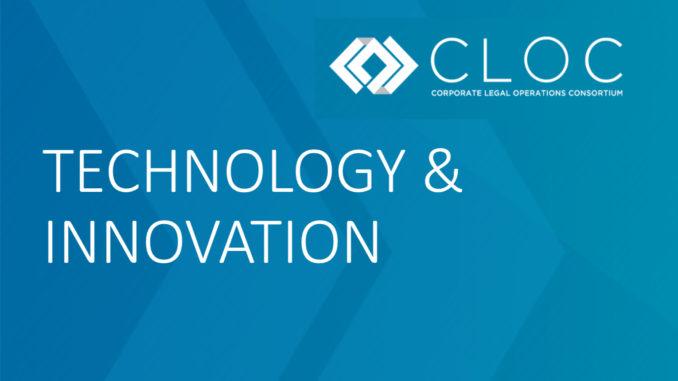
CLOC, the inhouse lawyer and legal operations organisation, has found in a survey of 213 corporates around the world that 12% are currently ‘using AI within their tools and processes’. They also found that (see below), 45% are ‘exploring’ AI tools to reduce workloads, to gain better insight into legal data and to improve performance and efficiency.
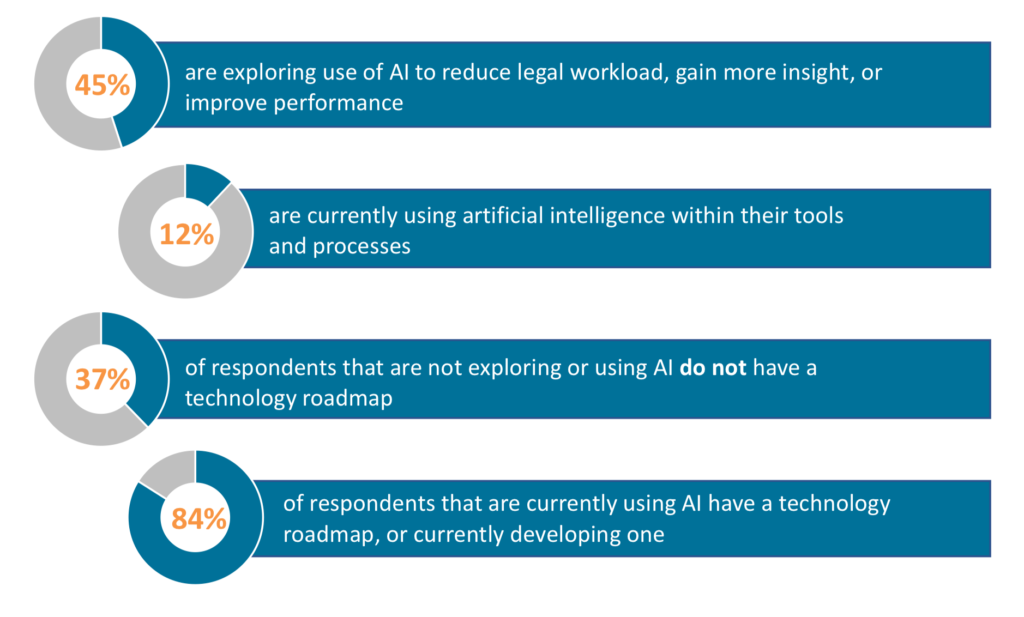
Exactly what tools they are using that are imbued with AI tech is not clear, and this could be a range of applications, from AI doc review, to narrower uses in areas such as reading billing narratives. That said, the main use will likely be around the contract review/analysis space.
Is 12% a ‘good number’? From what we have seen over the last few years, this is actually a surprisingly positive number.
The top commercial law firms are using AI tools, for sure, but when it comes to corporates managing such applications themselves, then the market feedback suggests a much smaller group – even if the total potential market is many, many times larger.
The survey also found that external legal spend has dropped a lot, by 24% for large to medium size companies (see below). Interestingly this comes as law firm associate salaries for the larger law firms appear to be having another massive growth spurt, and partner profits keep increasing. If work is reducing in the mid-to-large segment then it’s not hurting the elite and global firms, not yet. Maybe it’s having more impact on the corresponding medium to large law firm market?
Interestingly, they found that 0.44% of revenue is spent overall on legal. There’s been plenty of figures over the years, and this is a credible one. For lower profit margin businesses this is not a small amount. No wonder they’re moving more work inhouse.
Also, 55% are using AFAs to lower costs – and that means more fixed fees, which in turn help support more automation of legal work to protect law firm margins.
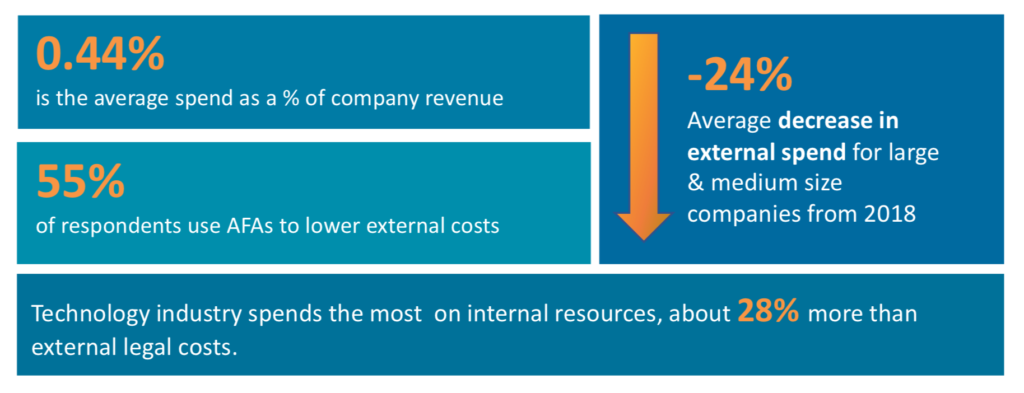
Also, (see below), over a third said they spent more than $750,000 on legal tech in 2018. That’s a hefty amount.
When it comes to what companies have actually got up and running, the table below shows that e-billing systems are number 1 – with 78% of corporate legal teams having some way of digitally managing and tracking their legal spend…..phew………if it had been any lower than that we’d all have had a collective heart attack. (And does that mean 22% – almost a quarter – are not managing their spend or who they spend it on…? Or is this just e-billing as in ‘we email you a bill’?)
You can’t change what you don’t measure…..as they say.
The next big one was CLM and then e-signatures. No prizes for these either.
Interestingly only 22% have implemented an application for knowledge management……which looks to be a huge opportunity for growth in that area.
Equally, does that mean that 78% of inhouse legal teams don’t have a comprehensive means for managing their own KM…? That’s a scary thought.
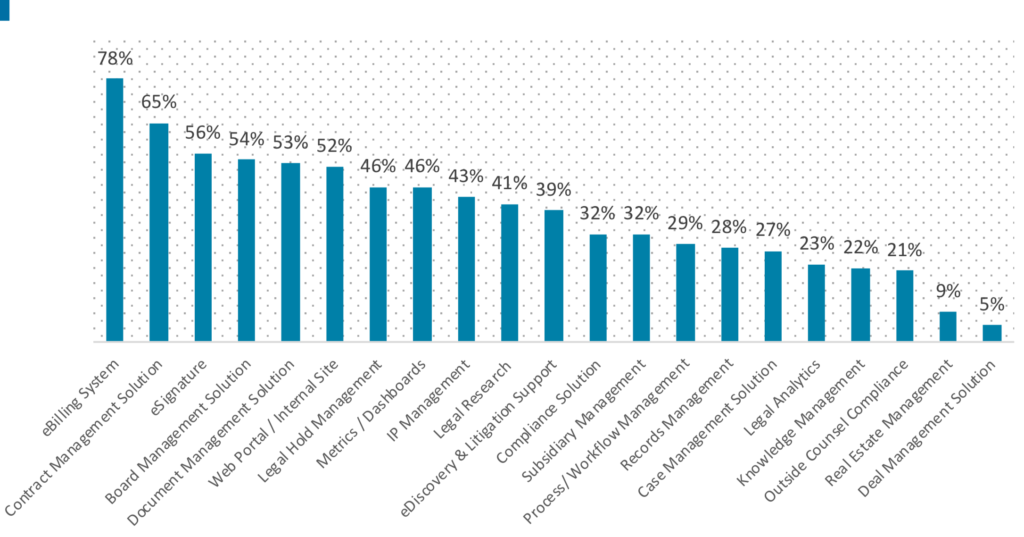
When it comes to desires around innovation delivered by law firms, the top wish is AFAs. Second is project management.
Both of these suggest inhouse lawyers want more confidence in what a bill will be, and when work will arrive, and how it will be delivered. They didn’t see incubators as vital, but then again it would be surprising at this stage if they did.
Also, they found that: ‘Companies with a developed technology roadmap spend 3x more on technology than organisations that don’t have a roadmap or those still developing a roadmap’. Which perhaps supports the point that you can’t change in an organisation what you don’t measure – and certainly can’t steer investment if you don’t have a plan on what you need.
As ever, all roads lead back to strategy and planning.
And finally, ALSPs (and law companies….) are having a good time according to CLOC – with 34% of the surveyed saying they have increased their usage. Good news for Elevate and peers.
Conclusion: good developments and some promising indicators. But, clearly also lots of basics that need plenty of change to move the dial inside inhouse legal teams.

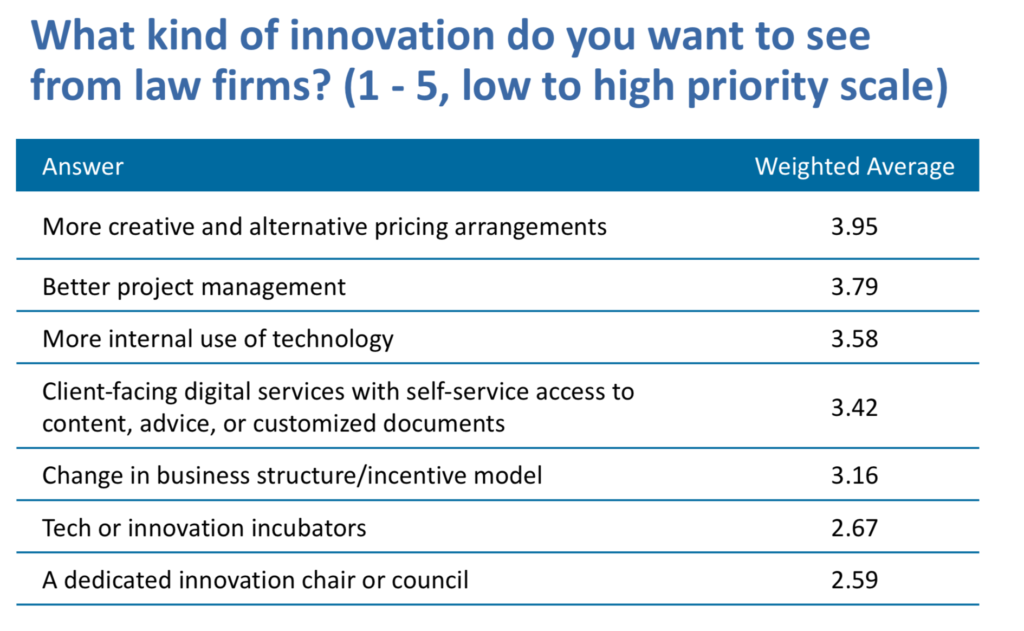
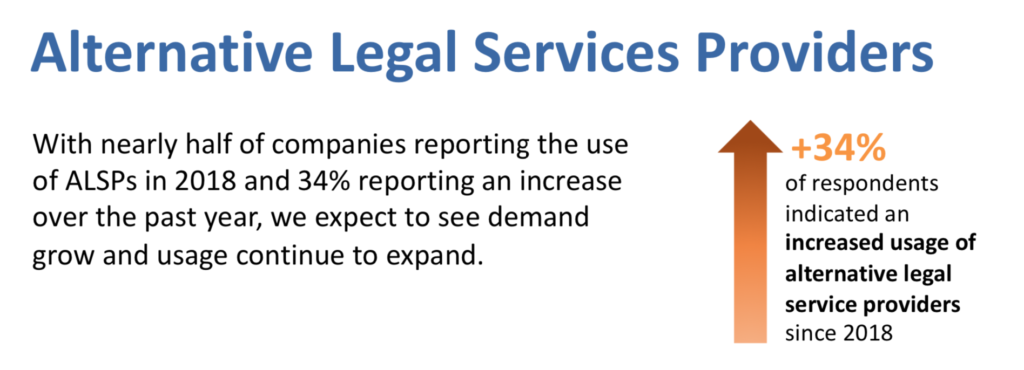
1 Trackback / Pingback
Comments are closed.